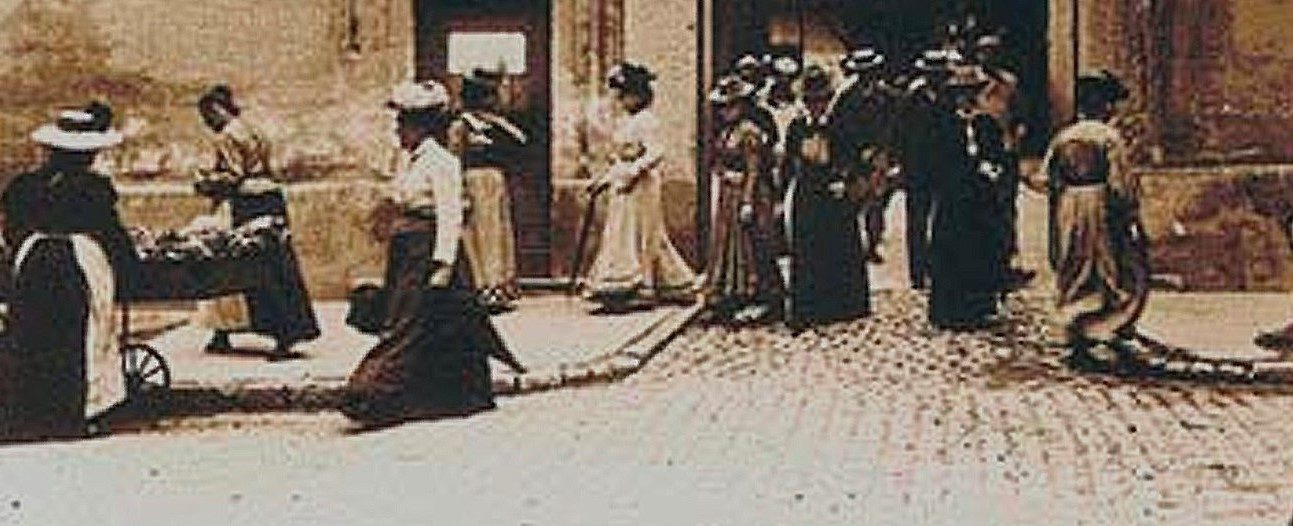United States, 1957
Directed by Sidney Lumet
With Martin Balsam (Juror 1, the chair), John Fiedler (Juror 2), Lee J. Cobb (Juror 3), E. G. Marshall (Juror 4), Jack Klugman (Juror 5), Edward Binns (Juror 6), Jack Warden (Juror 7), Henry Fonda (Juror 8, the doubter), Joseph Sweeney (Juror 9), Ed Begley (Juror 10), George Voskovec (Juror 11), Robert Webber (Juror 12)

This courtroom drama takes place where the public is not usually allowed to go: the room where the jurors gather after the closing arguments of the trial of a criminal case to reach a verdict. Twelve people, in this case all male and white, this is after all the 1950s United States, must decide whether a young man is guilty of first degree homicide, that is if the helpless fellow briefly showed in the film did kill his abusive father. The first impression the camera conveys about them is that they are a motley group of citizens who are rather relaxed and confident about the work to be done. This is mainly because the case basks so much in clarity to them: it is easy to make one’s mind, and all made it smoothly, and as a consequence their main talking point can be about the scorcher hitting the city.
Yet the first vote, called by the chair of the jury, Juror 1, and held in the first minutes of the meeting, shows that they are only eleven ready to deliver a guilty verdict. The twelfth feels that the trial has not made things clear enough and that there are other possibilities to contemplate. Juror 8 is a doubter in a process where the decision must be unanimous and guilt must be claimed beyond any reasonable doubt.
Votes are going to be regular; they stand as the milestones in the increasingly tense, fraught, and complex debate the doubter has started and record the growing impact his lines of reasoning have on his fellow jurors. He slowly puts under review all evidence and testimonies and suggests that, on second thoughts, they are rather flimsy and insufficient. The debate is mesmerizing as it recreates the trial that has just happened and drives the jurors to see elements and ideas under a fresh light. Their memory and intellect are sorely tested and they end up challenging their first attitude. The final image shows a room slowly emptied by men sobered by the experience and with a different view of the things, the opposite of the opening image. Their duty turns out to be performed in the best way, since it implies to question the trial’s proceedings to find the certainties allowing for fairness.
The change of mind does not come up smoothly and even less pleasantly. The sheer violence of some arguments proves that putting aside personal sentiments and ideas can be a really counter-intuitive and daunting task for most people. As the doubter emphasizes, it is easier to cling to one’s own prejudices. They could be rooted on social backgrounds as well as the supposed racial origins of the defendant or what their personality’s traits seem to be. Anyone can be dismissed in the course of heated arguments for just being shy, behaving stubbornly, or growing up poor; and anyone can be carried away and turned angry, high emotions leading to an outburst just like the scorcher ending up with torrential rains (the weather pattern deftly reflects the tension defining the film’s point while reminding that jurors and justice cannot be so cut off from the surrounding reality and society to deliver reasonable and fair judgments – that would be, indeed, too easy). The tense debate lays bare cracks into some persons, for instance a father who has split with his son in the case of Juror 4 or the brilliant executive unable to grasp much and to have an opinion, in the case of Juror 12 (a leadership position does not seem to make someone smarter while taking a fringe position like juror 8 can have an astonishing impact).
From the start, as he walks down alone to a window in a distinctive white suit, the doubter seems to belong to another stripe. The character turns out to be the most intellectual and honest man in the group, presenting his arguments cautiously and smartly. His discourse sometimes verges on being presumptuous and the man sounds to be too good to be true – the film cannot escape a kind of heroics about the enlightened citizen making the system better despite the odds. The role is tailor-made for Henry Fonda, who is one of the film’s producers. Fonda clearly enjoyed the story and felt it important to shoot it.
The director who was picked was already known for his work on television. “12 Angry Men” was to be the cinematic debut of Sidney Lumet, launching what was to be a long and thriving career in the American cinema. He conveys from the start how daunting the task of the characters is in fact going to be with dramatic shots on the stately and awe-inspiring interiors of a New York City’s courthouse and then a great high angle shot on the meeting room. The camera makes the best of the arguably difficult task of shooting people talking around a table (and moreover doing so on a shoestring budget). The room is shot at carefully chosen angles and extended close-ups are favored, shooting in a smart, expressive, intense manner whatever emotion or reaction creeps over the faces (with Fonda’s remaining a bit too systematically quiet). The screenplay is clever and replete with lines that honestly and vividly captures the characters’ thoughts, either spontaneous or deeper, always revealing of a genuine personality. This helps enormously the film to stand as a compelling and realistic study on the fragile nature of justice.

